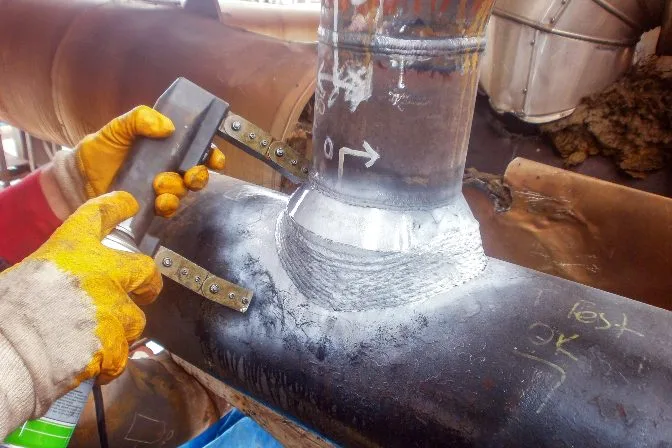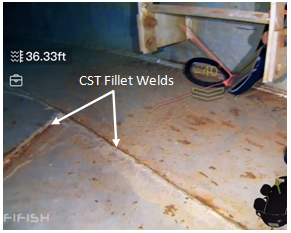A Detailed Summary of Container Welding Assessment Specifications and Methodologies for Improved Weld High Quality and Performance
The significance of welding examination standards in the production of containers can not be overstated, as they act as the foundation for ensuring weld stability and functional integrity. Various assessment techniques, including aesthetic analyses and advanced non-destructive testing approaches, are important in determining possible defects that can endanger performance. Adhering to regulative requirements not just boosts weld top quality yet additionally mitigates the danger of pricey failures. As we check out the subtleties of these methodologies, it becomes necessary to take into consideration just how an organized strategy can revolutionize current practices and result in significant improvements in results.
Value of Welding Assessment Requirements

Welding inspection criteria include a variety of requirements, consisting of material requirements, welding treatments, and qualifications of personnel entailed in the welding procedure. By enforcing these requirements, companies can systematically recognize and rectify prospective defects, thus lowering the possibility of pricey repair services or catastrophic failings. In addition, extensive assessment practices promote a society of liability and precision, motivating welders to keep high degrees of workmanship.

Usual Welding Assessment Techniques


Ultrasonic Examining (UT) is an additional common strategy, making use of high-frequency audio waves to discover internal flaws that might not be noticeable externally. This method is specifically efficient for determining gaps or additions within the weld metal. Magnetic Particle Examining (MT) is additionally extensively utilized, especially for ferromagnetic materials, as it discloses surface area and near-surface flaws via the application of magnetic fields and ferrous bits.
Additionally, Liquid Penetrant Screening (PT) spots surface-breaking problems by applying a penetrant to the weld and afterwards utilizing a developer to attract out the penetrant. Each of these methods adds to a detailed evaluation approach, making sure that welds meet the rigid top quality requirements required in storage tank construction.
Governing Specifications and Compliance
Governing standards and conformity are essential elements in ensuring the security and reliability of welded frameworks in storage tank building and construction - Tank Welding Inspection. These requirements offer to establish minimum demands for product homes, welding treatments, and inspection techniques, therefore minimizing the risk of architectural failings and boosting total efficiency
Key companies, such as the American Society of Mechanical Engineers (ASME) and the American Welding Culture (AWS), give guidelines that are commonly taken on in the sector. Compliance with these requirements not just makes sure adherence to ideal practices however additionally meets legal and contractual responsibilities, guarding the interests of stakeholders.
Regulative bodies commonly mandate adherence to details codes, such as ASME Code Section IX for welding qualifications and API 650 for welded storage tanks. These codes lay out requirements for welding methods, credentials of employees, and screening approaches to verify weld integrity.
Regular audits and evaluations are important to keeping conformity, as they aid recognize inconsistencies from developed standards. Non-compliance can cause substantial fines, task hold-ups, and safety and security threats. Thus, a robust understanding of regulatory standards and a commitment to conformity are paramount in achieving top quality and resilient welded tank structures.
Non-Destructive Testing Approaches
Just how can the honesty of bonded frameworks be guaranteed without triggering damage? Non-destructive testing (NDT) approaches use a durable service, enabling inspectors to review check it out weld top quality without compromising the product - Tank Welding Inspection. Amongst the most common NDT methods are ultrasonic testing (UT), radiographic testing (RT), magnetic fragment screening (MT), and dye penetrant testing (PT)
Radiographic screening involves passing X-rays or gamma rays via the weld, developing images that disclose structural issues such as splits or voids. This approach is indispensable for examining the integrity of complicated welds.
Magnetic particle screening is suited for ferromagnetic materials, where magnetic areas reveal surface area and near-surface suspensions. Color penetrant testing uses a fluid dye to highlight surface-breaking imperfections, making it an effective approach for non-porous materials.
Each of these NDT techniques has distinctive advantages, enabling detailed analyses tailored to certain materials and welding processes. By carrying out these strategies, industries can make sure the integrity and safety of bonded frameworks, eventually improving total performance.
Enhancing Weld High Quality Via Inspection
Efficient examination plays a crucial function in improving weld top quality, serving as an important checkpoint in the construction procedure. By recognizing possible issues early, inspections mitigate the risk of jeopardized structural integrity and make sure conformity with sector criteria. Using a combination of visual examinations, non-destructive testing (NDT) methods, and mechanical evaluations, examiners can find problems such as porosity, fractures, and incomplete combination.
Carrying out a robust assessment method not just enhances click to find out more the general quality of welds but also fosters a society of liability amongst welders and producers. Normal training and qualification of assessment workers make sure that they are geared up with the required skills to recognize and address potential troubles properly. This aggressive technique lessens rework and connected costs, ultimately adding to predict efficiency.
Additionally, thorough documentation of evaluation findings look at more info gives beneficial insights into recurring concerns, assisting in continuous improvement in welding techniques. By leveraging sophisticated technologies, such as automated ultrasonic screening or digital radiography, weld top quality can be improved through a lot more exact assessments. Finally, a strenuous inspection procedure is important in achieving top notch welds, making sure safety, integrity, and longevity in storage tank manufacture.
Final Thought
Finally, the application of strenuous storage tank welding evaluation criteria and approaches is crucial for making sure weld integrity and efficiency. By making use of a combination of aesthetic evaluations, non-destructive screening methods, and adherence to regulative criteria, organizations can successfully recognize and minimize possible flaws. Cultivating a culture of responsibility amongst welders even more boosts the quality of welding processes. Inevitably, these techniques add to reduced structural failings, lower repair prices, and improved operational effectiveness within the sector.